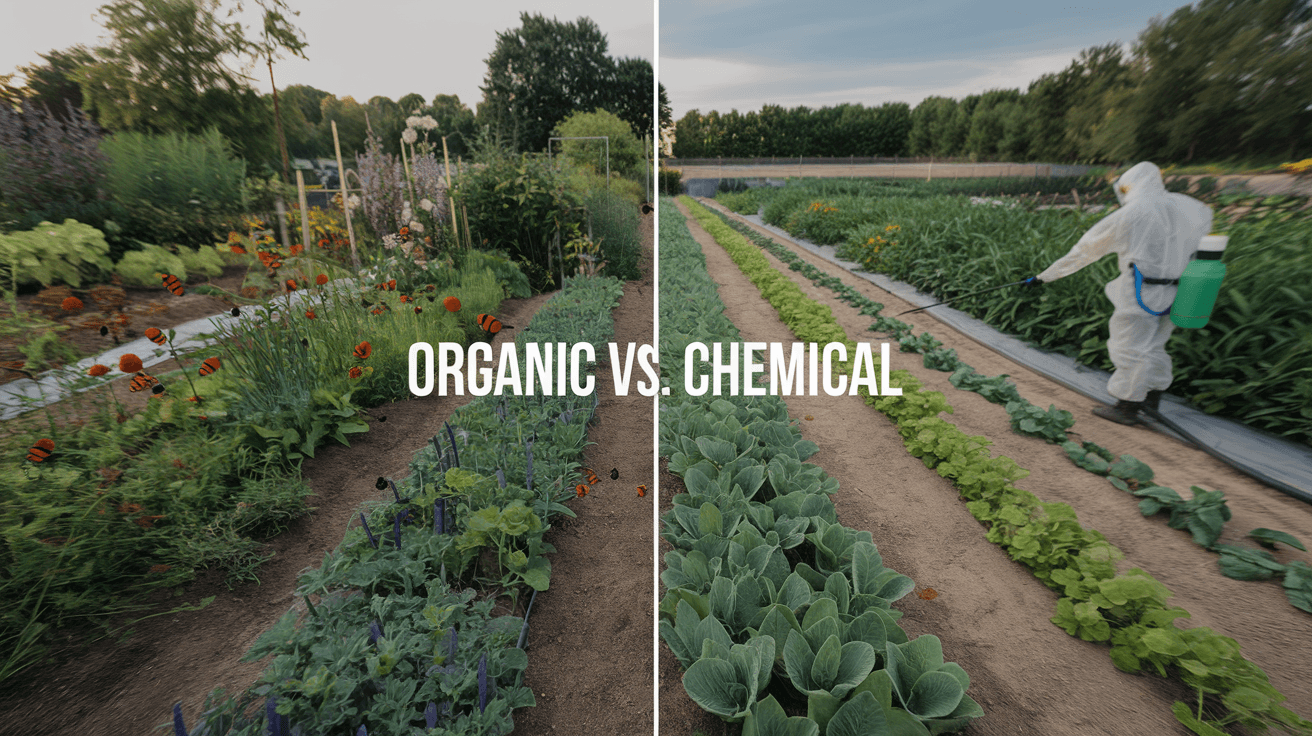
How to Choose Between Organic and Chemical Pest Control
The battle for pest control supremacy rages on in gardens and farms across the globe. As eco-conscious consumers, we’re increasingly torn between the allure of quick-fix chemical solutions and the promise of sustainable, organic alternatives. But which approach truly reigns supreme in the war against unwanted critters?
Imagine a world where your plants thrive without harmful residues, where beneficial insects flourish alongside your crops, and where your conscience rests easy knowing you’re nurturing a healthier ecosystem. Organic pest control offers this tantalizing vision. Yet, the siren song of chemical pesticides beckons with its promise of rapid results and cost-effectiveness. The choice between these two approaches isn’t just about effectiveness—it’s a decision that impacts our health, environment, and the future of agriculture itself.
In this comprehensive guide, we’ll delve into the nitty-gritty of organic and chemical pest control methods, exploring their effectiveness, environmental impact, and long-term implications. From neem oil to nematodes, from glyphosate to integrated pest management, we’ll equip you with the knowledge to make an informed choice that aligns with your values and gardening goals. Let’s embark on this journey to uncover the truth behind pest control and discover which approach might be the best fit for your green space!
Understanding Organic and Chemical Pest Control
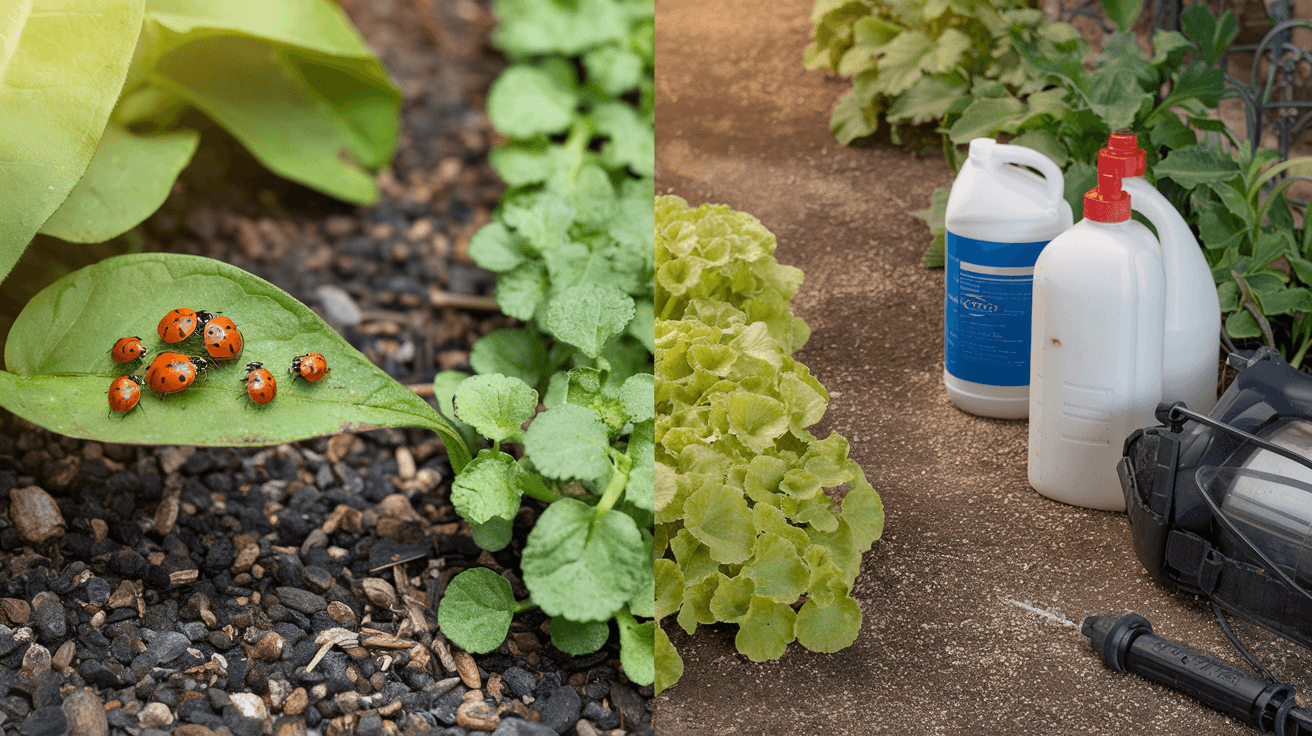
Definitions and key differences
Organic and chemical pest control methods represent two distinct approaches to managing harmful organisms in agriculture and gardening. Organic pest control relies on substances derived from natural sources such as animal, vegetable, or mineral origins. These pesticides typically break down more quickly in the environment compared to their synthetic counterparts. Chemical pest control, on the other hand, utilizes synthetic pesticides that are manufactured through chemical processes.
Key differences between organic and chemical pest control include:
| Aspect | Organic Pest Control | Chemical Pest Control |
|---|---|---|
| Origin | Natural sources | Synthetic manufacturing |
| Persistence | Less persistent in environment | Can be longer-lasting |
| Application frequency | May require more frequent applications | Often requires fewer applications |
| Specificity | Often more targeted to specific pests | Can have broader impact |
| Cost | Potentially higher for farmers | Generally more affordable |
It’s important to note that neither method is inherently safe or dangerous. The safety and effectiveness of both organic and chemical pesticides depend on proper usage, adherence to label instructions, and understanding of their toxicity levels.
Origins and development of organic gardening
Organic gardening has its roots in the broader organic agriculture movement, which emphasizes ecological balance and biodiversity. The development of organic practices was driven by a desire to minimize synthetic inputs and promote sustainable farming methods. Key principles of organic agriculture include:
- Prioritizing biodiversity
- Utilizing ecological practices
- Avoiding synthetic fertilizers and pesticides
- Prohibiting genetic engineering and irradiation
The United States Department of Agriculture (USDA) has established standards for organic labeling, providing a regulatory framework for organic products. These standards prohibit the use of synthetic fertilizers, sewage sludge, and certain other practices in organic production.
Regulatory standards for organic labeling
The USDA plays a crucial role in regulating organic products in the United States. The certification process for organic labeling involves:
- Adherence to USDA organic standards
- Prohibition of synthetic fertilizers and pesticides
- Avoidance of genetically engineered crops
- Regular inspections and audits
The Organic Materials Review Institute (OMRI) also contributes to the regulatory landscape by determining which products are permissible for use in organic production. This ensures that organic farmers have access to approved materials that align with organic principles.
Now that we have covered the fundamentals of organic and chemical pest control, including their definitions, origins, and regulatory standards, we’ll explore specific organic pest control methods in the next section.
Organic Pest Control Methods
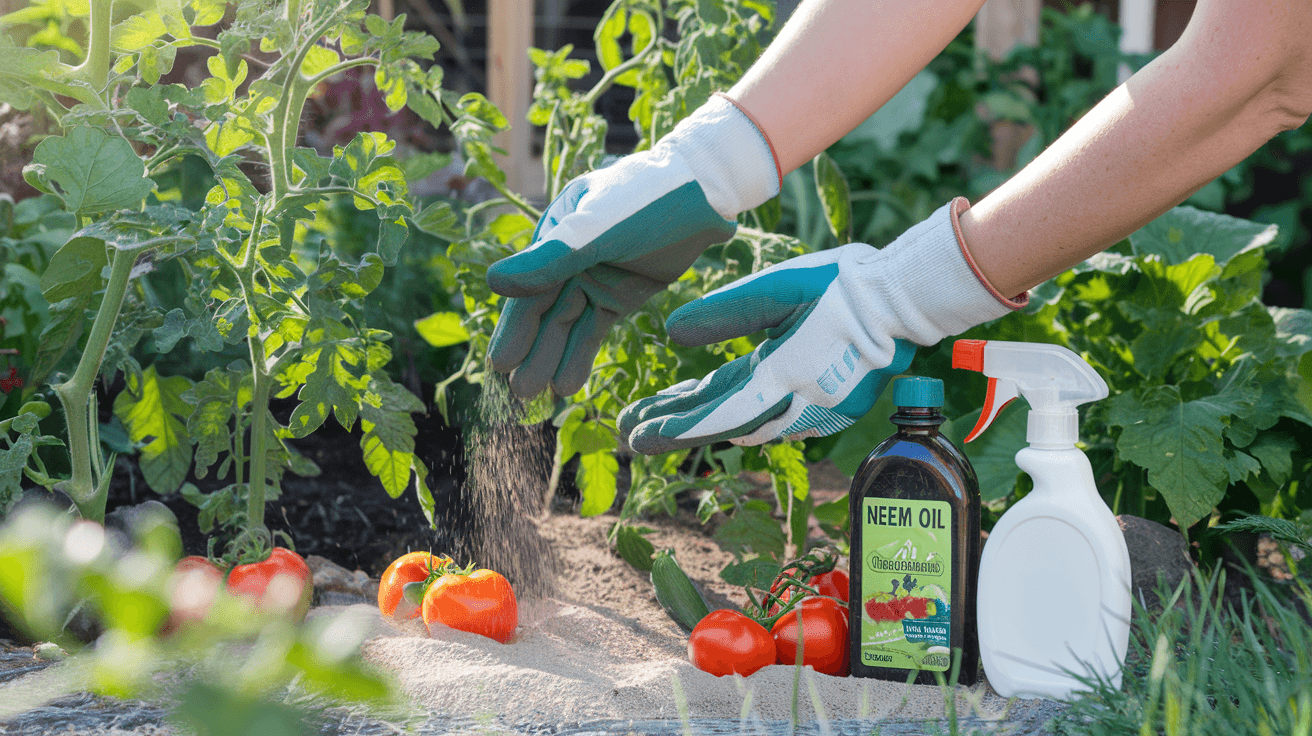
Now that we’ve covered the basics of organic and chemical pest control, let’s delve into the various organic pest control methods available to gardeners and homeowners.
Natural substances and their sources
Organic pest control often relies on natural substances readily available in our environment. For instance:
- Coffee grounds: Effective deterrent when placed around the home and garden
- Banana peels: Buried near plant stems to combat aphids and enrich soil
- Apple cider vinegar: Traps fruit flies when placed in a bowl covered with plastic wrap
- White vinegar: Mixed with water and essential oils to erase ant trails
- Essential oils: Eucalyptus, lavender, clove, or peppermint can repel dust mites
Physical barriers and exclusion techniques
Physical controls play a crucial role in preventing pest infestations:
- Fences
- Screens
- Covers
These barriers protect crops while allowing essential factors like sunlight and rain to reach plants. Maintaining cleanliness in tools and clothing is also vital for pest management.
Biological control strategies
Biological controls utilize beneficial organisms to manage pest populations:
| Beneficial Organism | Target Pest | Method |
|---|---|---|
| Predatory insects | Various | Natural predation |
| Fern-leaf yarrow | Harmful pests | Attracts predatory insects |
| Marigolds | Root-feeding nematodes | Repels through plant compounds |
This approach enhances biodiversity in the landscape and provides long-term pest management solutions.
Habitat manipulation and companion planting
Manipulating the growing environment can significantly impact pest populations:
- Soil fertility management
- Crop rotation
- Equipment sanitation
- Companion planting (e.g., sweet basil to ward off flies)
These cultural control methods are considered the most vital for preventing plant diseases and managing pests effectively.
With these organic pest control methods in mind, we’ll next explore chemical pest control approaches to provide a comprehensive understanding of available options.
Chemical Pest Control Approaches
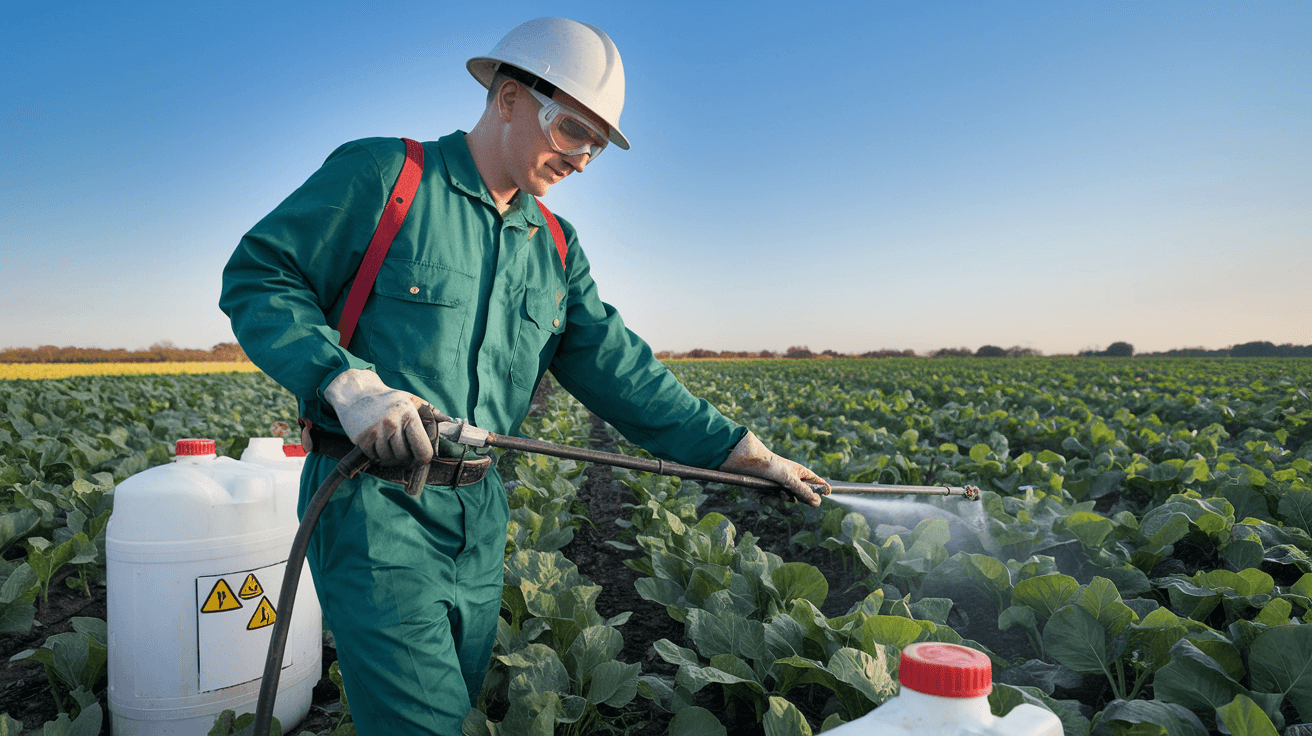
Now that we have explored organic pest control methods, let’s delve into chemical pest control approaches, which offer a different set of tools for managing pests effectively.
Synthetic pesticides and their composition
Chemical pest control primarily relies on synthetic pesticides, which are man-made compounds designed to target specific pests. These pesticides fall into four main categories:
- Organochlorides
- Organic phosphorus
- Carbamates
- Pyrethrins/pyrethroids
Synthetic pesticides are engineered to be highly effective while minimizing harm to human health and the environment. However, their use has raised significant concerns due to potential health and ecological impacts.
Application methods and effectiveness
Chemical pesticides can be applied through various methods, each suited to different situations:
| Application Method | Effectiveness | Best Use Case |
|---|---|---|
| Spraying | High | Large areas, crops |
| Baiting | Targeted | Specific pests (e.g., fire ants) |
| Dusting | Moderate | Dry environments |
| Fumigation | Very high | Enclosed spaces |
Indoxacarb, a sodium channel blocker, exemplifies the effectiveness of modern synthetic pesticides. It disrupts insect nervous systems, causing rapid feeding cessation and death within 48 hours, particularly in Lepidopterans. Its low toxicity to animals and the environment makes it suitable for various crops globally.
Shelf life and storage considerations
Synthetic pesticides generally have a longer shelf life compared to organic alternatives. However, proper storage is crucial to maintain their effectiveness and prevent environmental contamination:
- Store in a cool, dry place
- Keep away from direct sunlight
- Use airtight containers
- Follow manufacturer’s guidelines for expiration dates
- Dispose of expired pesticides properly to avoid environmental harm
While chemical pesticides offer powerful tools for pest management, their use must be carefully considered in light of potential health and environmental impacts. As we transition to comparing the effectiveness and results of organic and chemical pest control methods, it’s important to weigh these factors against the benefits of synthetic pesticides in various pest management scenarios.
Comparing Effectiveness and Results
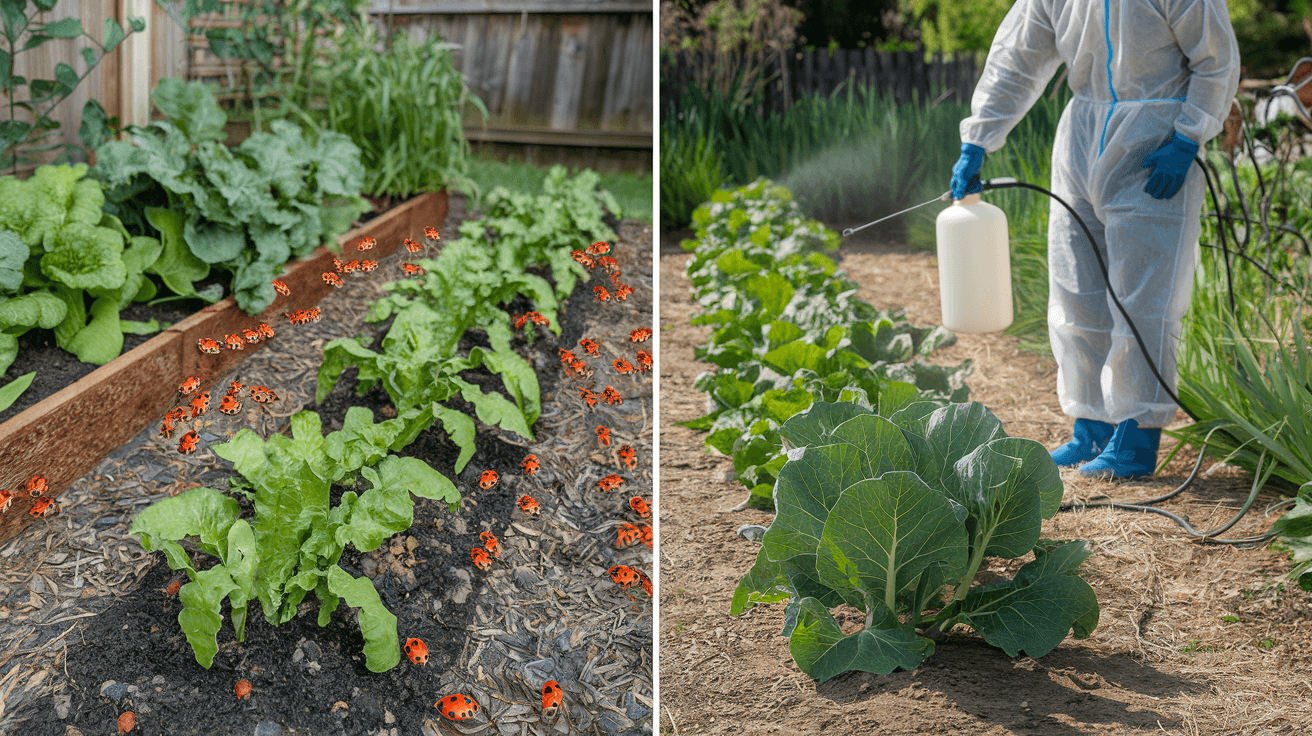
Now that we’ve explored chemical pest control approaches, let’s compare the effectiveness and results of organic and chemical methods.
A. Speed of pest elimination
When it comes to eliminating pests quickly, chemical pesticides often have the upper hand. Synthetic insecticides tend to act faster than their organic counterparts. However, this doesn’t mean organic methods are ineffective:
| Method | Speed of Elimination | Considerations |
|---|---|---|
| Chemical | Rapid | May harm beneficial organisms |
| Organic | Slower | Often more sustainable long-term |
B. Duration of protection
The duration of protection varies between organic and chemical pest control methods:
- Chemical pesticides: Generally provide longer-lasting protection
- Organic solutions: May require more frequent applications
It’s important to note that while chemical pesticides might offer extended protection, this can come at a cost to the environment and beneficial organisms.
C. Cost considerations
When evaluating the cost-effectiveness of pest control methods, several factors come into play:
- Initial cost: Chemical pesticides may be less expensive upfront
- Long-term expenses: Organic methods often require more frequent applications, potentially increasing costs over time
- Hidden costs: Environmental impact and potential health risks associated with chemical pesticides
Research from the University of Guelph suggests that some organic insecticides may have higher Environmental Impact Quotients (EIQ) at field application rates compared to certain synthetic options. This challenges the assumption that organic pesticides are always more environmentally friendly and cost-effective in the long run.
Integrated Pest Management (IPM) offers a balanced approach, combining various techniques to manage pests sustainably while considering both effectiveness and cost. By integrating organic and chemical methods where appropriate, IPM can provide effective pest control while minimizing environmental impact and potentially reducing overall costs.
With this comparison of effectiveness and results in mind, next, we’ll delve into the crucial aspect of environmental impact, examining how both organic and chemical pest control methods affect our ecosystem.
Environmental Impact
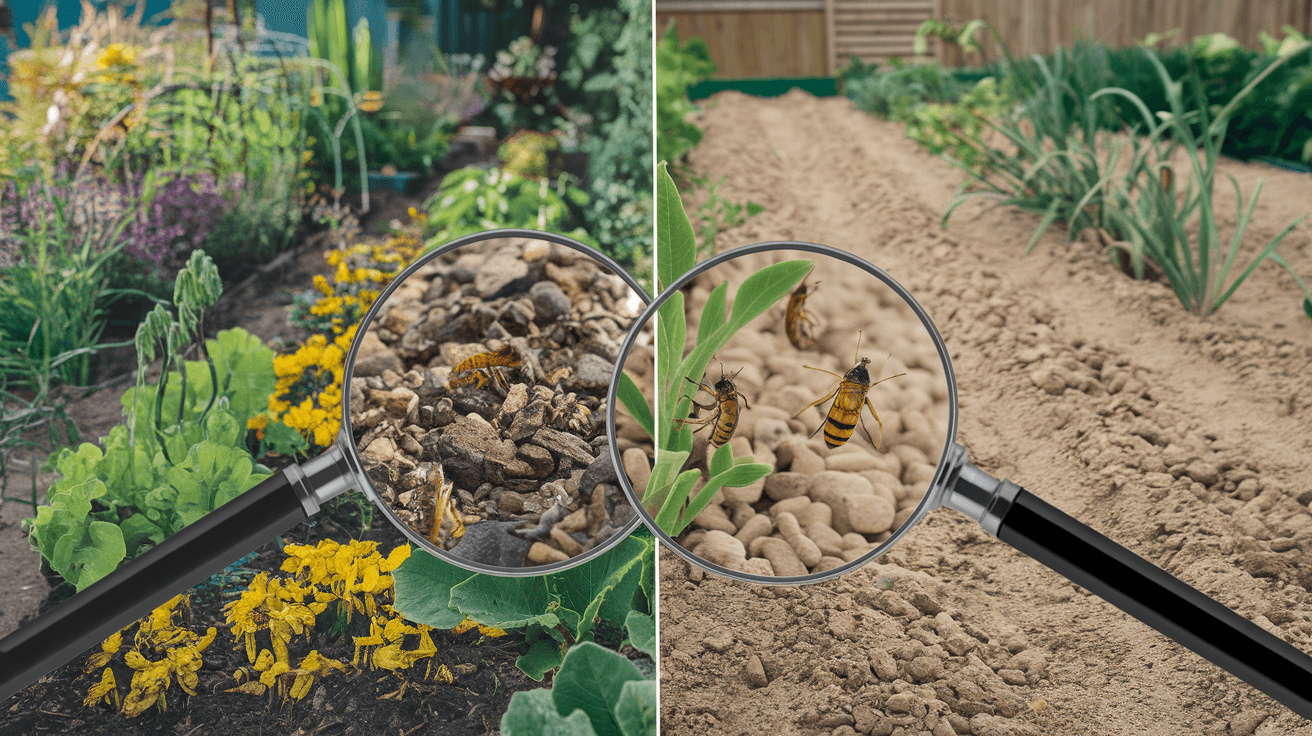
Now that we have compared the effectiveness and results of organic and chemical pest control methods, let’s delve into their environmental impact. This crucial aspect can significantly influence the choice between these approaches.
A. Effects on non-target organisms
Chemical pesticides often have far-reaching consequences beyond their intended targets. Studies show that over 98% of sprayed insecticides and 95% of herbicides drift beyond their targeted areas, affecting beneficial plants, animals, and even humans. This widespread contamination poses significant risks to biodiversity, particularly in high-biodiversity regions.
The impact on wildlife is substantial:
- Pollinators: Pesticides can eliminate bees and other pollinators, leading to reduced agricultural productivity and economic losses.
- Birds: Millions of bird deaths are attributed to pesticide exposure each year.
- Aquatic life: Fish kills and disruptions in the aquatic food web are common consequences.
- Amphibians: Developmental abnormalities in amphibians have been linked to pesticide exposure.
B. Soil and water pollution concerns
The environmental footprint of pesticides extends to soil and water systems:
| Concern | Impact |
|---|---|
| Runoff | Contaminates distant water bodies, risking aquatic ecosystems |
| Soil contamination | Affects plant growth and soil microorganisms |
| Persistent pollutants | Organochlorine compounds like DDT accumulate in the food chain |
Improper handling and disposal of pesticides exacerbate these pollution issues, leading to long-term environmental degradation.
C. Biodiversity preservation
The reliance on chemical pesticides has significant implications for biodiversity:
- Pest resistance: Increasing pest resistance leads to a cycle of repeated applications, diminishing effectiveness and harming non-target species.
- Ecosystem disruption: Pesticides can eliminate entire populations of beneficial organisms, destabilizing ecosystems.
- Food web impacts: The loss of certain species can have cascading effects throughout the food chain.
To address these concerns, alternative methods such as integrated pest management (IPM) and sustainable agricultural practices are increasingly advocated. These approaches aim to reduce pesticide dependence and mitigate environmental harm while maintaining effective pest control.
With these environmental impacts in mind, next, we’ll explore the health and safety considerations associated with organic and chemical pest control methods, which are closely tied to the environmental effects we’ve discussed.
Health and Safety Considerations
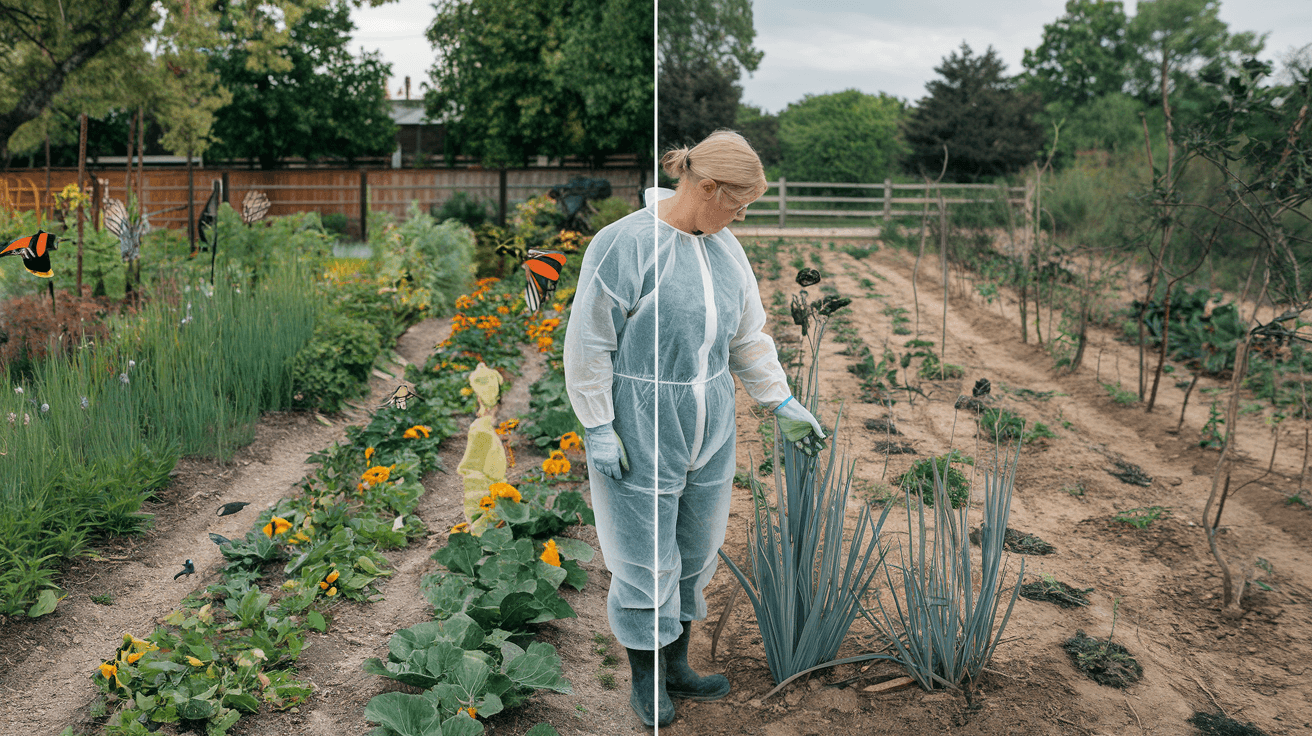
Now that we’ve examined the environmental impact of pest control methods, let’s delve into the crucial health and safety considerations associated with organic and chemical pest control approaches.
Toxicity levels of organic vs. chemical pesticides
When comparing organic and chemical pesticides, toxicity levels can vary significantly. The Environmental Protection Agency (EPA) conducts thorough human health risk assessments to evaluate these effects. Their findings reveal that:
- Some chemical pesticides, like organophosphates and carbamates, directly impact the nervous system
- Other pesticides may cause skin or eye irritation, act as carcinogens, or disrupt hormonal functions
- The EPA establishes a “reasonable certainty of no harm” for pesticide residues on food
| Pesticide Type | Potential Health Effects |
|---|---|
| Organophosphates | Nervous system impact |
| Carbamates | Nervous system impact |
| Others | Skin/eye irritation, carcinogenic effects, hormonal disruption |
Residue concerns in food production
Residue concerns are a significant factor in food production. The EPA addresses this by:
- Setting usage limits for pesticides
- Establishing safety requirements to protect health and the environment
- Creating human health benchmarks for approximately 350 pesticides registered for food crops
These measures aim to identify safe exposure levels in water and prevent adverse health effects, even in the absence of specific drinking water health advisories or federal standards.
Proper handling and application precautions
To ensure safe pest control practices, proper handling and application of pesticides is crucial. The EPA’s evaluation process includes:
- Toxicity assessments that dictate necessary precautions on pesticide labels
- Requirements for protective clothing
- Signal words indicating toxicity levels
For additional guidance on household pesticide safety, individuals can consult the National Pesticide Information Center (NPIC), which offers science-based information on:
- Pesticide products
- Poisoning management
- Toxicology
- Environmental chemistry
With these health and safety considerations in mind, we’ll next explore the long-term implications of choosing between organic and chemical pest control methods.
Long-term Implications
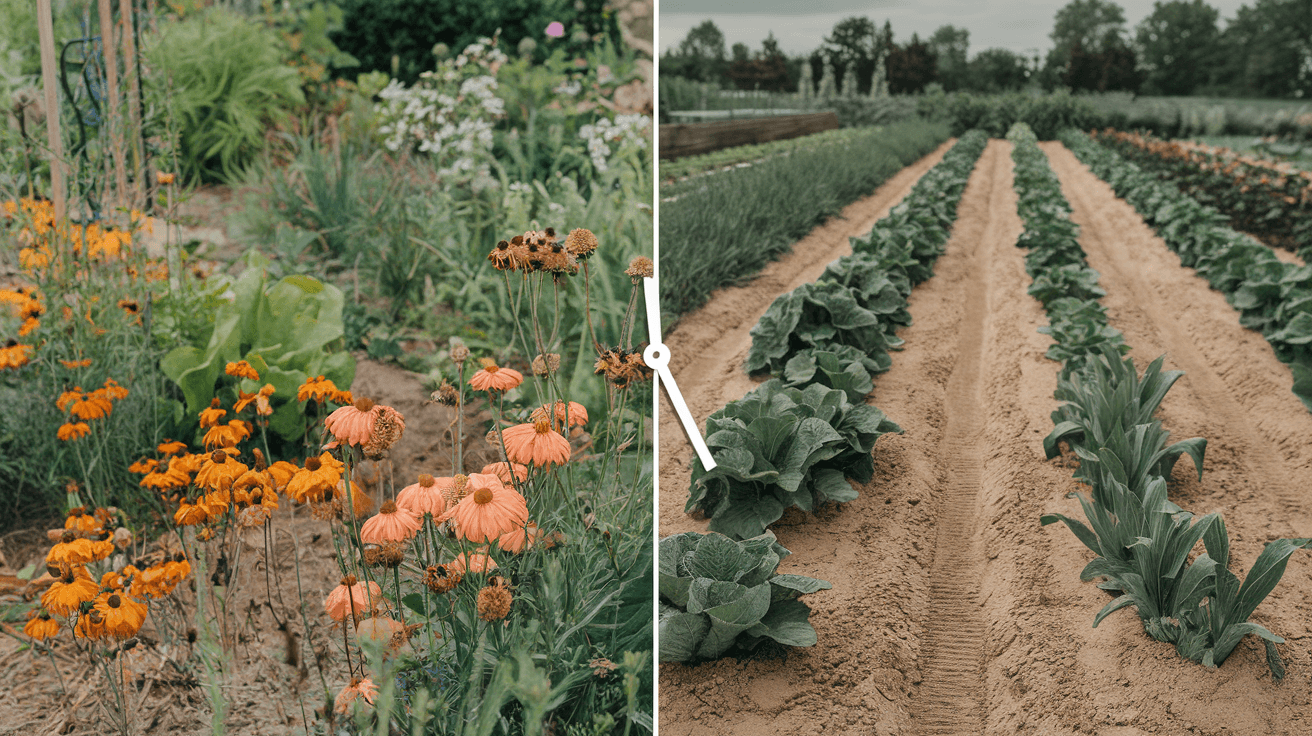
Now that we’ve covered the health and safety considerations of pest control methods, let’s delve into their long-term implications. Understanding these effects is crucial for making informed decisions about pest management strategies.
Pest resistance development
Continuous use of chemical pesticides can lead to pest resistance over time. This phenomenon occurs when pests adapt to survive exposure to specific pesticides, rendering them less effective. As a result:
- Farmers may need to increase pesticide dosages or switch to stronger formulations
- New pesticides must be developed to combat resistant pests
- The cycle of resistance and new pesticide development continues
This resistance development contributes to the long-term health risks associated with pesticide exposure, as mentioned in the reference content. Farmers and agricultural workers face increased risks of:
| Health Issue | Potential Long-term Effects |
|---|---|
| Respiratory problems | Chronic cough, lung diseases, lung cancer |
| Cancer risks | Blood cancers, non-Hodgkin’s lymphoma, brain cancer |
| Neurological issues | Cognitive problems, emotional instability |
| Reproductive health | Fertility issues, birth defects, developmental challenges |
Ecosystem balance and sustainability
The long-term use of chemical pesticides can significantly impact ecosystem balance:
- Soil health deterioration
- Water contamination
- Disruption of natural predator-prey relationships
- Reduction in biodiversity
These effects can lead to unsustainable agricultural practices and compromise long-term food security. The reference content highlights the importance of considering the environmental impact of pesticides when making pest control decisions.
Impact on beneficial insects and pollinators
Chemical pesticides often have unintended consequences on non-target species, particularly beneficial insects and pollinators. Long-term implications include:
- Decline in pollinator populations, affecting crop yields
- Reduction in natural pest control provided by beneficial insects
- Disruption of food chains and ecological networks
The reference content emphasizes the need for caution in pesticide use, especially considering its effects on the broader ecosystem and human health.
With these long-term implications in mind, next, we’ll explore Integrated Pest Management (IPM) as a potential solution that balances effective pest control with environmental and health considerations.
Integrated Pest Management (IPM)
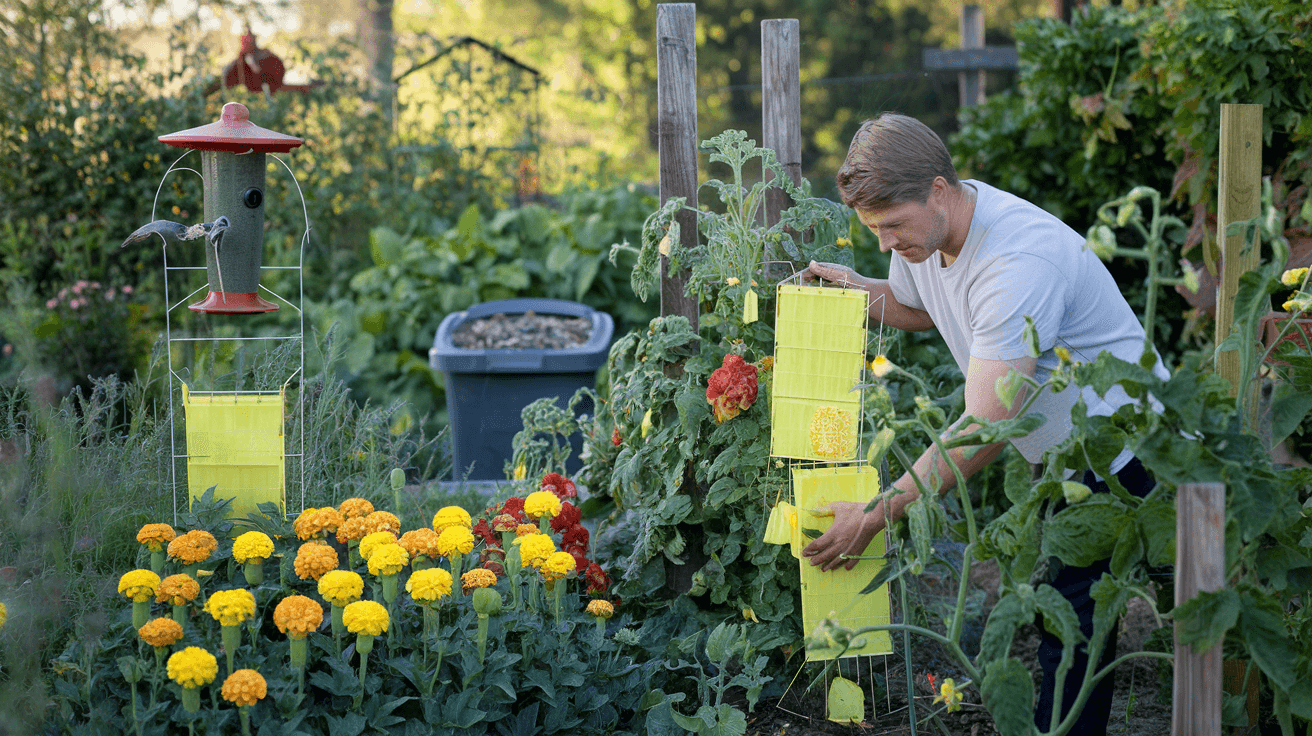
Now that we’ve explored the long-term implications of pest control methods, let’s delve into a comprehensive approach that combines the best of both organic and chemical strategies: Integrated Pest Management (IPM).
Combining organic and chemical approaches
IPM is a holistic pest management strategy that integrates various methods to minimize economic, health, and environmental risks. This approach combines:
- Biological controls
- Cultural practices
- Physical methods
- Chemical interventions (as a last resort)
By utilizing both organic and chemical approaches, IPM offers a balanced solution that addresses the limitations of relying solely on one method. This integration allows for more effective pest control while reducing the overall use of synthetic pesticides.
Monitoring and prevention strategies
A crucial aspect of IPM is the emphasis on monitoring and prevention. Key strategies include:
- Regular crop and pest health monitoring
- Early problem detection
- Accurate pest identification
- Establishment of action thresholds
| Strategy | Description |
|---|---|
| Monitoring | Regular observation of crops to identify potential pest issues |
| Prevention | Practices like crop rotation and selecting disease-resistant varieties |
| Action Thresholds | Determining when pest populations require intervention |
These strategies help manage pest populations without complete eradication, maintaining a balance in the ecosystem.
Selective use of pesticides
In IPM, chemical pesticides are used selectively and as a last resort. This approach:
- Reduces reliance on synthetic pesticides
- Minimizes environmental contamination
- Protects non-target species
When intervention is necessary, IPM prioritizes methods that are compatible with organic practices. This selective use of pesticides contributes to:
- Enhanced biodiversity
- Improved soil health
- Reduced pesticide resistance
By combining organic and chemical approaches, implementing robust monitoring and prevention strategies, and using pesticides selectively, IPM offers a comprehensive solution to pest management. With this understanding of IPM, we can now move on to making an informed choice between organic and chemical pest control methods.
Making an Informed Choice
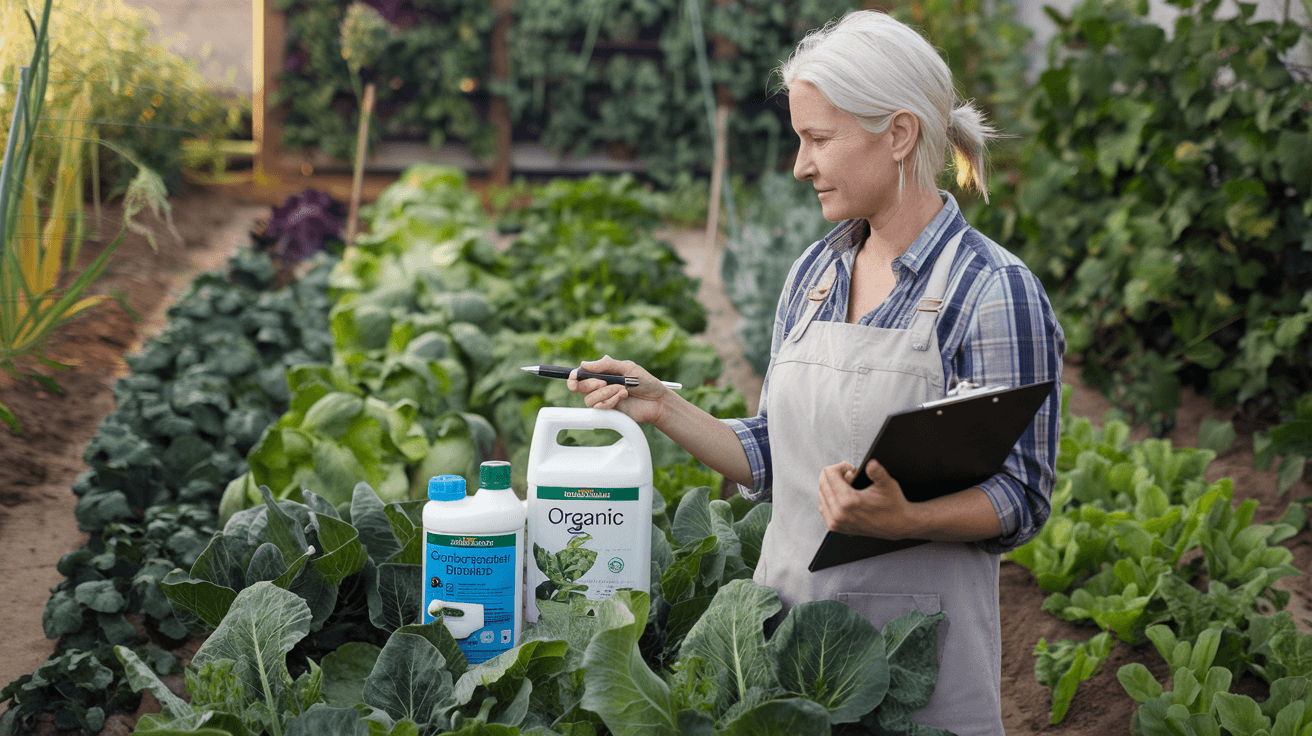
Now that we’ve explored Integrated Pest Management (IPM), let’s focus on making an informed choice between organic and chemical pest control methods.
Assessing specific pest problems
When deciding between organic and chemical pest control, it’s crucial to first identify and assess the specific pest issues you’re facing. Different pests require different approaches, and understanding the nature of your infestation will guide your choice.
| Pest Type | Organic Control | Chemical Control |
|---|---|---|
| Flying insects | Biological predators, traps | Insecticide sprays, fogging |
| Rodents | Physical barriers, traps | Rodenticides |
| Soil-dwelling pests | Beneficial nematodes | Granulated insecticides |
Considering garden or farm ecosystem
The health of your garden or farm ecosystem plays a vital role in pest management:
- Organic methods prioritize long-term sustainability and minimal environmental disruption
- Chemical solutions may offer quicker results but can impact beneficial organisms
- Consider the potential for pest resistance development with chemical treatments
Evaluating personal values and priorities
Your choice should align with your personal values and priorities:
- Environmental impact: Organic methods are generally more eco-friendly
- Speed of results: Chemical solutions often work faster
- Long-term effectiveness: Integrated approaches combining multiple methods may be most sustainable
- Health considerations: Chemical pesticides can pose risks to human health and pets
- Cost factors: DIY organic methods may be more cost-effective for minor issues
When making your decision, remember that an effective strategy often involves a combination of biological, chemical, and physical measures. Consider consulting with pest control professionals to determine the most suitable approach for your specific situation.
With this comprehensive understanding of how to make an informed choice, we’ll next explore the role of Professional Pest Control Services in implementing these strategies effectively.
Professional Pest Control Services
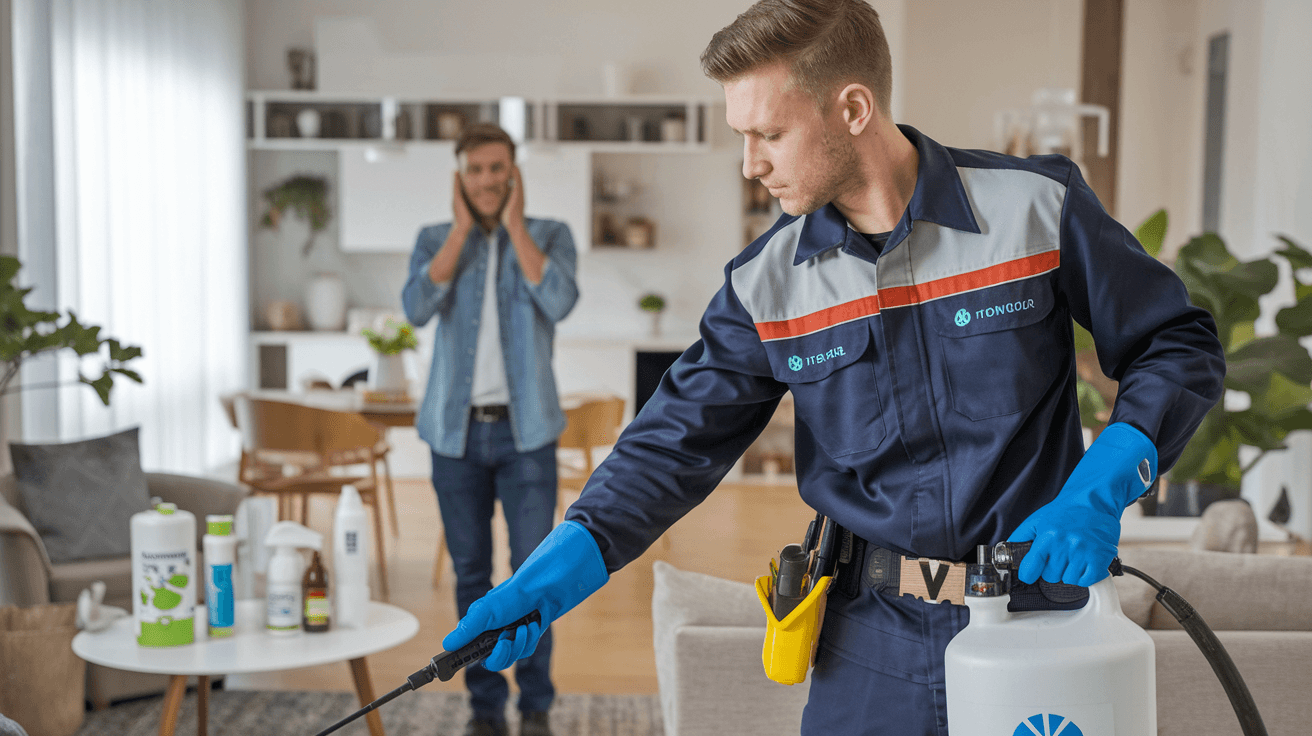
Now that we’ve explored making an informed choice between organic and chemical pest control methods, let’s delve into the realm of professional pest control services. These experts can provide valuable assistance when DIY methods fall short or when facing particularly challenging infestations.
Organic options in professional services
Professional pest control services have increasingly embraced organic and eco-friendly solutions to meet growing consumer demand for safer alternatives. Companies like Chem-free Organic Pest and Lawn Services exemplify this trend, offering low-impact, environmentally friendly pest management options. These services often utilize:
- Integrated Pest Management (IPM) principles
- Non-chemical methods as a first line of defense
- Strategies to create less hospitable environments for pests
For instance, some professionals may adjust watering schedules to reduce moisture and deter pests, aligning with IPM practices.
When to seek expert assistance
While many pest issues can be handled independently, certain situations warrant professional intervention:
- Severe infestations
- Recurring pest problems
- Presence of dangerous pests (e.g., termites)
- Need for long-term pest management solutions
Professional services can provide more effective and lasting results, especially when dealing with complex pest issues that require specialized knowledge and equipment.
Evaluating service providers’ methodologies
When choosing a pest control service, it’s crucial to assess their approach and methods:
| Aspect to Evaluate | Questions to Ask |
|---|---|
| Chemical Usage | What specific pesticides do you use? Are they EPA-approved? |
| Safety Measures | How do you protect pollinators and non-target species? |
| Organic Options | Do you offer non-toxic or organic pest control solutions? |
| IPM Implementation | How do you incorporate IPM principles in your services? |
It’s important to discuss the products and techniques used by pest control technicians. Some companies, like Safe Pro Pest Control, specialize in non-toxic methods and prioritize health and safety in pest management. When evaluating service providers, consider their commitment to eco-friendly practices and customer satisfaction.
Remember that even organic pesticides require careful application. No insecticides, including natural options like neem oil, are entirely safe when misapplied. Professional services should be knowledgeable about the proper use of both organic and synthetic pesticides to ensure effectiveness while minimizing risks to inhabitants and the environment.
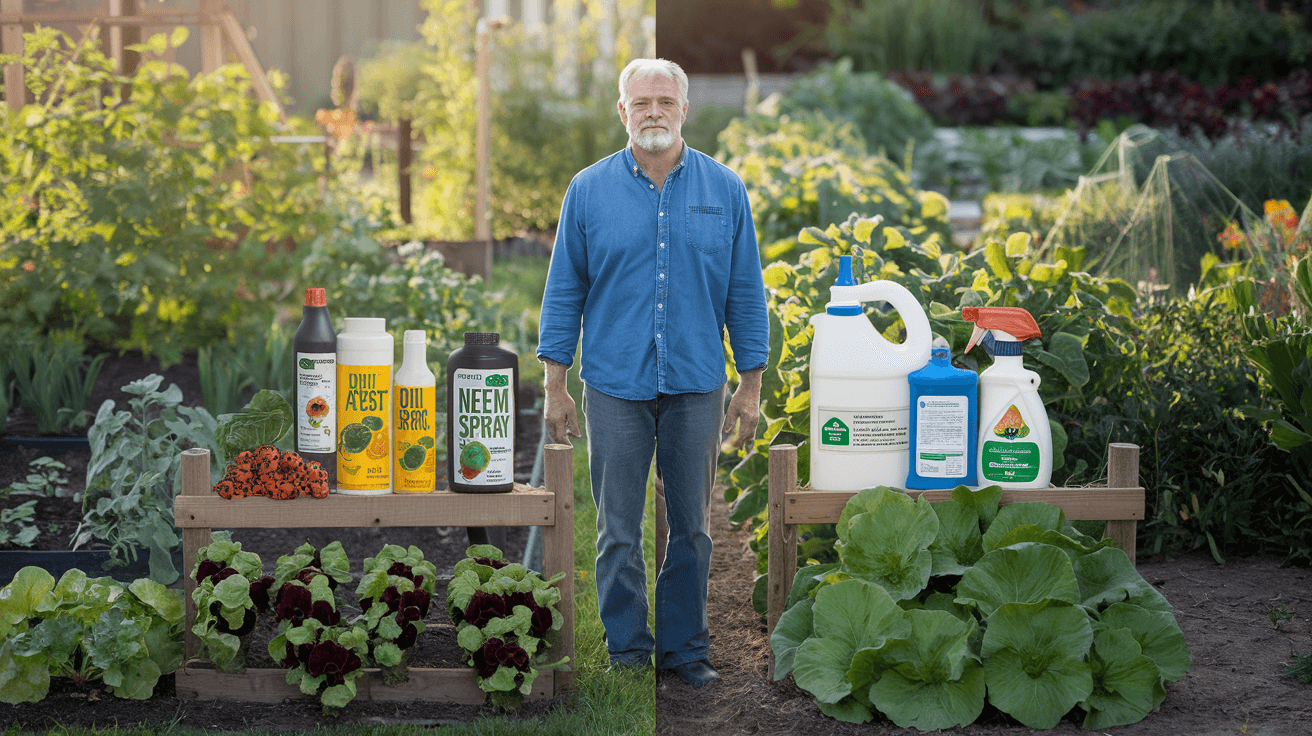
Choosing between organic and chemical pest control methods requires careful consideration of various factors. While organic approaches offer environmental benefits, sustainability, and reduced health risks, chemical pesticides provide quick and often cost-effective solutions. The key lies in understanding the specific pest problem, evaluating the long-term impacts, and considering the surrounding ecosystem.
Ultimately, an integrated pest management (IPM) strategy may offer the best of both worlds. By combining preventive practices, continuous monitoring, and selective use of both organic and chemical controls when necessary, gardeners and farmers can effectively manage pests while minimizing environmental impact. Whether opting for organic methods, chemical solutions, or a balanced approach, making an informed decision based on your unique circumstances is crucial for successful and responsible pest control.